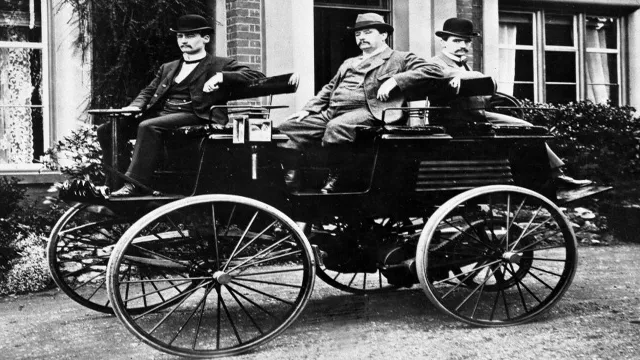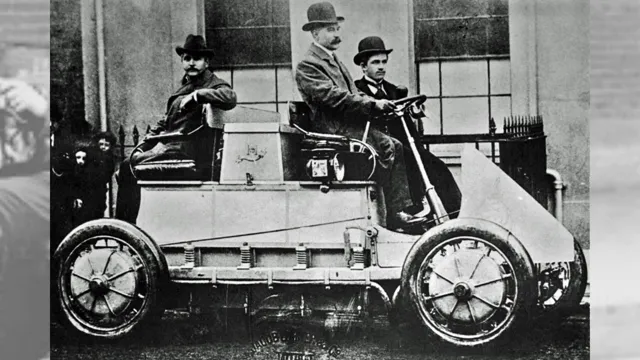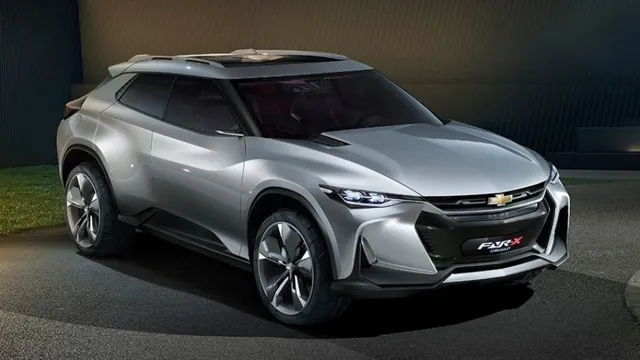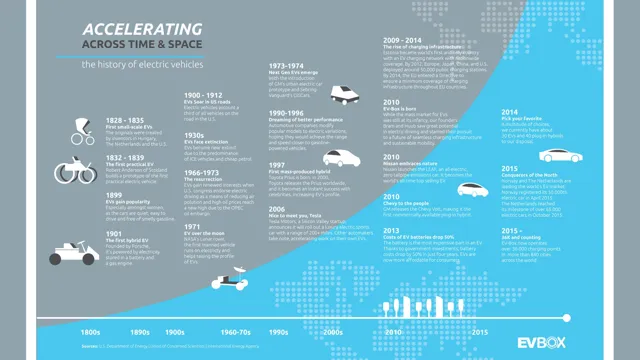The Electrifying Revolution: Unveiling the Surprising Origins of the First Electric Car in History
In today’s world, electric cars are becoming increasingly popular with an ever-growing demand for vehicles that minimize our carbon footprint. However, not many know that the world’s first electric car was invented in the late 1800s, marking a significant shift in transportation history. As we continue to develop technology to reduce our reliance on fossil fuels, let’s take a look at the revolutionary invention that started it all.
How did it come to be, and what was life like before the advent of electric cars? Let’s explore the story of the first electric car.
Our Electric Past: The Dawn of Invention
When we think of electric cars, we may imagine modern vehicles with sleek designs and cutting-edge technology, but did you know that the first electric car in history was actually invented in the late 19th century? It was in 1884 that Thomas Parker, an inventor from England, built the first electric car that was powered by rechargeable batteries. This was a major breakthrough in transportation technology at the time. However, electric cars did not become widely popular until the early 20th century, when gasoline-powered cars dominated the market.
It wasn’t until recently that electric cars have made a comeback due to concerns about climate change and a growing interest in sustainable living. As the world continues to shift towards cleaner energy sources, we can look back at the dawn of invention and appreciate the ingenuity of Thomas Parker and others who helped pave the way for the electric cars of today.
Early Attempts at Electric Cars
Electric cars might seem like a relatively new invention, but the idea of an electric vehicle actually dates back to the early 1800s. Inventors and scientists of the time were working on developing machines that could run on electricity, and they saw the potential for using this new technology in transportation. One of the earliest attempts at an electric car was made in Scotland in 1837 by a chemist named Robert Davidson.
He built a small electric locomotive that could travel at a speed of 4 miles per hour. In the United States, Thomas Davenport began working on an electric car in the 1840s. Davenport’s car, which was powered by a battery, was able to travel short distances at low speeds.
Other inventors followed suit, and throughout the 1800s, many different versions of the electric car were developed. While these early attempts at electric cars were primitive by today’s standards, they laid the groundwork for the electric vehicles we see on the roads today.
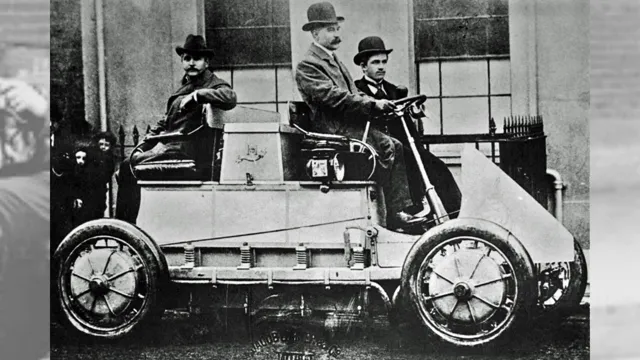
The First Working Electric Car
The first working electric car was invented in the late 1800s by a man named Thomas Parker, who was a British inventor and industrialist. Parker’s electric car was fitted with lead-acid batteries that provided power to an electric motor, which in turn propelled the vehicle forward. This invention was significant, as it marked the transition towards the use of electric vehicles, which were much cleaner and quieter than their petrol counterparts.
However, Parker’s electric car was initially met with skepticism, as many people believed that petrol engines were the only viable way to power a vehicle. Nonetheless, Parker’s invention revolutionized the transportation industry, paving the way for the development of modern electric cars that we see today.
Design and Operations of the First Electric Car
The first electric car in history was designed and operated by Thomas Parker, a British inventor, in 188 The car had a range of approximately 50 miles and was powered by lead-acid batteries. It was a significant breakthrough for the industry as it involved the use of electric motors, which were far more efficient than traditional combustion engines.
The design of the car was also unlike anything that had come before it, featuring a sleek, modern chassis that made it stand out from the competition. However, the high cost of the batteries made it difficult for Parker to mass-produce the car, and it was only after several years of development that he was able to make it commercially viable. Despite these challenges, Parker’s car served as a blueprint for future innovations in electric vehicle technology, inspiring other inventors to explore the potential of alternative energy sources in the transportation industry.
Today, as we embrace a more sustainable future, we can appreciate the ingenuity and foresight of Parker’s design, which paved the way for a new era of clean, efficient transportation.
The Battery and Power Source
When it comes to the design and operations of the first electric car, the battery and power source played a pivotal role. Invented in the 1830s, the first electric car could not have been developed without an efficient battery to power it. The first batteries were made with weak cells, which limited the car’s speed and distance.
However, advancements in battery technology led to the development of stronger batteries, which enabled the electric car to travel longer distances at higher speeds. The first electric car battery was rechargeable, which allowed drivers to top up the battery and keep the vehicle running for extended periods. Today, the battery remains a crucial component in the design and function of electric cars, paving the way for more sustainable and environmentally-friendly means of transportation.
The Motor and Transmission
The first electric car had a completely different motor and transmission design than traditional gas-powered vehicles. Instead of relying on an internal combustion engine, the electric car used an electric motor powered by a battery. This motor allowed for instant torque and acceleration, giving early electric cars a significant advantage in speed over their gas-powered counterparts.
The transmission of these vehicles was also unique, as they did not require the multiple gears of traditional transmissions. Instead, electric cars relied on a single-speed gearbox that transferred power to the wheels. This design made the electric car much simpler and easier to operate than gas-powered vehicles.
It’s fascinating to think about how the first electric car paved the way for advancements in electric vehicle technology we see today.
Charging and Driving Range
The first electric car, designed and developed in the late 1800s, had a significantly shorter range than modern electric vehicles. The current range of an EV depends on factors such as the battery’s size and the driving conditions, but it has significantly improved since the introduction of the first electric car. Today, most modern EVs have a range of at least 200 miles or more on a single charge, with some models boasting a range of over 300 miles.
The charging process of an EV has also changed with advancements in technology. Early EVs had to be charged for hours before they could drive again, but now, some models can be charged in as little as 30 minutes using a fast charger. Moreover, new electric vehicles also come equipped with regenerative braking systems, which help recharge the battery while driving.
It’s fascinating to see how much has improved since the first electric car, and it’s exciting to imagine the possibilities for the future of electric vehicles.
Impact and Legacy of the First Electric Car
The first electric car in history can be traced back to the 19th century, with the creation of the “Flocken Elektrowagen” by German inventor Andreas Flocken in 188 This tiny, battery-powered vehicle was a far cry from the sleek, high-tech electric cars of today, but it represented an important milestone in the history of transportation. The impact of this early electric car was felt immediately, with other inventors and engineers quick to follow Flocken’s lead and start work on their own electric vehicles.
Of course, electric cars did not take over the roads overnight, and it would be several decades before they became a popular alternative to gasoline-powered vehicles. Nonetheless, the legacy of that first electric car lives on in the many advancements made in the field of electric vehicle technology over the years. Today, electric cars are more efficient, affordable, and eco-friendly than ever before, and it all started with Flocken’s little Elektrowagen.
Influence on Future Innovations
The first electric car had a significant impact on the future of automotive technology. While they were initially limited in range and performance, electric vehicles paved the way for more advanced electric technology that we see today. The influence of electric cars has extended beyond just automobiles, however.
The development of rechargeable batteries has led to advancements in mobile technology, such as smartphones and laptops. In addition, renewable energy sources like wind and solar power have been utilized to charge electric vehicles, promoting the use of sustainable energy. The legacy of the first electric car is evident in the widespread use of electric technology today, and it will continue to inspire future generations to innovate for a cleaner and more efficient future.
Environmental Benefits and Challenges
The first electric car made a significant impact on the environment by significantly reducing carbon emissions. Unlike gasoline vehicles that emit harmful gases such as carbon monoxide and nitrogen oxide, electric vehicles produce no tailpipe emissions making them ideal for reducing air pollution. The electric car’s legacy is one of environmental sustainability, and its continued growth and adoption can lead us to a future with cleaner air and a healthier environment.
However, the transition to electric vehicles has not been without challenges. While battery technology improves, the production of batteries has its own environmental impacts, including the mining and disposal of raw materials. Additionally, the electricity that powers electric vehicles must come from a renewable source to fully realize the environmental benefits.
Despite these challenges, the growth of the electric car industry and the continued adoption of renewable energy can pave the way for a more sustainable future.
Conclusion: Revolutionizing Transportation
The first electric car in history was a true testament to human ingenuity and innovation. Considered a luxury item in the late 1800s, this early electric vehicle paved the way for the future of sustainable transportation. Though crude by today’s standards, the breakthroughs made in battery technology and electric motor design laid the foundation for the modern electric car revolution.
Who knew that over a century later, we would be zipping around in sleek, energy-efficient vehicles that owe their existence to this historic invention? This early electric car may have been a novelty in its time, but its impact on the world cannot be underestimated. The first electric car in history truly was a spark that ignited a movement towards a cleaner, more sustainable future. “
FAQs
Who invented the first electric car?
The first electric car was developed by Thomas Davenport in 1837.
What was the range of the first electric car?
The first electric car had a range of about 20 miles on a single charge.
When was the first electric car introduced to the public?
The first electric car was introduced to the public in the 1880s.
How did the first electric car compare to gasoline cars in terms of performance?
The first electric car was slower and had a shorter range than gasoline cars, but was cleaner and quieter to operate.
What advancements have been made in electric car technology since the first electric car was invented?
Modern electric cars have longer ranges, faster charging times, and are more efficient than the first electric car. Additionally, they now include features like regenerative braking and battery management systems.
